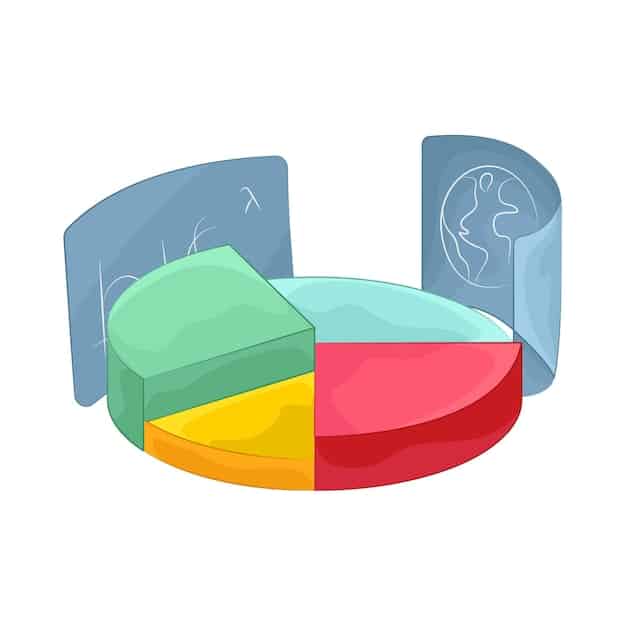SECURE Act 2.0 Impact: Retirement Planning for Couples

The SECURE Act 2.0 significantly reforms retirement savings, particularly affecting couples through changes to RMDs, catch-up contributions, 529-to-Roth transfers, and employer plan features, demanding strategic adjustments to joint financial planning.
Navigating retirement planning can be complex, especially with evolving legislation. For couples diligently saving for their golden years, a thorough understanding of the SECURE Act 2.0: How it impacts retirement planning for couples is not just beneficial, but essential. This comprehensive legislation introduces significant changes that could reshape your joint financial future, offering both new opportunities and requiring careful adjustments to existing strategies.
The evolution of retirement legislation: from SECURE Act 1.0 to 2.0
The journey of retirement legislation in the U.S. has been one of continuous adaptation, reflecting economic shifts and demographic changes. The original SECURE Act, passed in late 2019, laid down foundational changes aimed at boosting retirement savings. It made significant alterations to inherited IRAs, eliminated the “stretch IRA” for most non-spousal beneficiaries, and increased the age for RMDs (Required Minimum Distributions) from 70½ to 72. These initial reforms already started to shift how individuals, and especially couples, approached their long-term financial strategies.
Building upon this groundwork, the SECURE Act 2.0, officially known as the “Setting Every Community Up for Retirement Enhancement Act of 2022,” emerged as an even more expansive legislative effort. Signed into law in December 2022, it delves deeper into the mechanics of retirement savings, addressing accessibility, flexibility, and longevity. Its provisions are designed to encourage greater participation in employer-sponsored plans, simplify existing rules, and create new avenues for saving, particularly in light of extended lifespans and evolving career paths. For couples, these layers of legislative change mean a constant need to re-evaluate and adapt their shared retirement blueprints, ensuring they remain optimized and compliant with the latest rules.
Key distinctions between the acts
While both SECURE Acts share the overarching goal of enhancing retirement security, SECURE 2.0 introduces a broader array of provisions with more nuanced implications. The first act addressed immediate concerns like the inherited IRA rules and RMD age. SECURE 2.0, however, tackles a wider range of issues, from automatically enrolling employees in 401(k) and 403(b) plans to offering incentives for small businesses. It also introduces significant changes concerning emergency savings, student loan benefits, and unique rules for Roth accounts. For couples, understanding these distinctions is crucial because strategies that worked under the first SECURE Act might need considerable modification under the second, especially concerning tax implications and beneficiary planning.
- RMD age adjustments: SECURE 1.0 raised the RMD age to 72; SECURE 2.0 pushes it further to 73 in 2023, and eventually to 75 by 2033. This offers couples more time for tax-advantaged growth. However, strategic planning is needed to avoid large RMDs hitting at once.
- Catch-up contribution changes: While SECURE 1.0 kept catch-up contributions steady, SECURE 2.0 introduces higher catch-up limits for individuals aged 60-63, beginning in 2025. This creates significant opportunities for older couples to boost their savings in the years leading up to retirement.
- Emergency savings provisions: SECURE 2.0 introduces new options for emergency savings within employer-sponsored plans, which can be particularly beneficial for couples working towards financial stability while saving for retirement.
Ultimately, SECURE 2.0 represents a more comprehensive overhaul, reflecting a deeper commitment by policymakers to support long-term financial well-being. Its multi-faceted approach aims to address various aspects of retirement planning, from early career savings to late-stage distribution strategies. This necessitates that couples engage with the details, perhaps more so than with previous legislation, to fully leverage the benefits and mitigate any potential drawbacks to their joint retirement portfolio.

Key provisions of SECURE Act 2.0 impacting couples
The SECURE Act 2.0 is a robust piece of legislation packed with several provisions that hold direct relevance for couples planning their retirement. These changes touch upon various aspects, from how retirement funds are accessed to how they accumulate, potentially altering traditional planning approaches for married partners.
One of the most widely discussed changes is the adjustment to Required Minimum Distributions (RMDs). Under SECURE Act 2.0, the age at which individuals must begin taking RMDs from their retirement accounts has been gradually increased. Initially, it moved from 72 to 73 starting in 2023, and will further rise to age 75 beginning in 2033. This extended deferral period offers couples more time for their tax-deferred savings to grow, providing a longer runway for accumulation before mandatory withdrawals begin. This flexibility can be particularly beneficial for couples where one partner continues to work, or who prefer to extend the tax-free growth period in their accounts.
Enhanced catch-up contributions for older workers
For couples nearing retirement, the enhanced catch-up contribution limits are a game-changer. Starting in 2025, individuals aged 60, 61, 62, and 63 will be able to make larger catch-up contributions to their 401(k) and 403(b) plans. While the exact amounts will be indexed for inflation, this provision creates a significant window for older couples to supercharge their savings. For example, if both spouses in a couple are in this age bracket, they could collectively contribute substantially more, potentially closing any savings gaps or accelerating their path to desired retirement income levels. This provision especially benefits couples who started saving later in life or experienced career interruptions. It allows them to make up for lost time with greater tax advantages.
- Increased savings potential: Couples can strategically use these higher limits to maximize their pre-tax or Roth savings, depending on their tax situation.
- Opportunity to bridge gaps: Ideal for couples realizing they need to increase savings quickly in their final working years.
- Coordination of contributions: Couples should discuss whether both or only one partner should take advantage of these enhanced limits, considering their joint income and tax bracket.
New provisions for 529-to-Roth rollovers
A completely new and highly anticipated feature in SECURE Act 2.0 is the allowance for certain rollovers from 529 education savings plans into Roth IRAs. This provision addresses a long-standing concern for parents who over-saved in 529 plans, only to find themselves with unused funds after their children completed their education. Under the new rules, provided the 529 account has been open for more than 15 years, and subject to certain annual and lifetime limits, unused funds can be rolled into a Roth IRA for the designated beneficiary. This offers a valuable planning tool for couples, ensuring that contributions intended for education can still serve a retirement savings purpose if not fully utilized. It removes some of the “use it or lose it” anxiety associated with 529 plans, providing greater financial flexibility.
- Maximized long-term growth: Funds transferred to a Roth IRA will continue to grow tax-free and can be withdrawn tax-free in retirement, offering a significant advantage for young beneficiaries.
- Reduced waste: Couples no longer have to worry as much about excess 529 funds being taxed or penalized.
- Intergenerational wealth planning: This provision can be integrated into broader family financial planning, allowing parents to secure their children’s educational path while also boosting their retirement savings.
Each of these key provisions provides avenues for couples to optimize their retirement planning, whether by extending the growth phase of their accounts, accelerating savings in later career stages, or re-purposing unused education funds for retirement. However, successful implementation requires careful consideration of individual circumstances and a coordinated approach between partners.
Strategic implications for married couples
The changes introduced by SECURE Act 2.0 are not merely standalone provisions; they interact in ways that demand a fresh look at joint retirement planning for married couples. A truly optimized strategy will involve a holistic assessment of both individual and shared financial goals, leveraging the new rules to their full potential.
Coordinating RMDs and tax planning
With the RMD age being pushed back, couples gain more flexibility, but also new complexities in tax planning. For high-net-worth couples, this means more time for assets to grow in tax-deferred accounts, potentially leading to larger RMDs down the line. Strategic Roth conversions, performed well before RMDs kick in, can be a potent tool to mitigate future tax burdens. Couples can coordinate their conversions, perhaps one spouse converting in one year and the other in the next, to manage their joint adjusted gross income (AGI) and stay within desired tax brackets. Furthermore, if one spouse is significantly older and reaches RMD age first, the couple can plan withdrawals from different accounts or consider qualified charitable distributions (QCDs) to reduce their taxable income, especially if they are charitably inclined.
The new rules around RMDs also emphasize the importance of understanding beneficiary designations for all retirement accounts. While spousal beneficiaries still have unique and advantageous options, planning for non-spousal beneficiaries, especially under the remaining “10-year rule” from SECURE 1.0, becomes even more critical. Couples need to review and update their beneficiary forms regularly. This ensures that their estate plan aligns with their retirement income strategy, especially when considering the longevity of inherited funds and their tax implications for the surviving spouse or other heirs.
Maximizing catch-up contributions together
The enhanced catch-up contributions for those aged 60-63 present a unique opportunity for couples to significantly increase their combined savings. If both spouses are eligible, they can collectively contribute substantially more to their 401(k)s. This calls for a coordinated strategy. For example, if one spouse has access to a 401(k) with a superior employer match or investment options, they might prioritize maximizing their contributions up to the match, and then beyond, while the other spouse contributes to their own plan based on its features. Or, if one spouse is in a higher tax bracket, they might prioritize pre-tax contributions to reduce current taxable income, while the other with less income focuses on Roth contributions for future tax-free growth.
This period (ages 60-63) can be crucial for many couples to make up for any shortfalls in their retirement nest egg. It requires a joint assessment of their current income, future retirement spending projections, and overall financial health. The decision on how to utilize these increased limits—whether through Roth or traditional contributions—should be a joint one, based on their anticipated tax bracket in retirement. It’s an opportunity to fine-tune their combined savings trajectory in the final stretch of their working careers, potentially making a substantial difference in their ultimate retirement security.
For some couples, one spouse might continue working longer than the other. The new rules allow the working spouse to continue contributing to their workplace plan potentially past the traditional retirement age, even if the other spouse has already retired. This can be a strategic move to continue building tax-advantaged savings and delay Social Security benefits for the working spouse, ultimately enhancing their joint retirement income while allowing the retired spouse to begin enjoying their non-working phase.
Addressing common retirement challenges for couples
Even with the most meticulous planning, couples often face specific challenges in their retirement journey. SECURE Act 2.0 attempts to address some of these, but successful navigation still relies on proactive measures and clear communication between partners. One perennial issue is balancing current needs with future savings goals, especially when dealing with financial emergencies.
Emergency savings and unexpected expenses
The SECURE Act 2.0 introduces new avenues for emergency savings within employer-sponsored plans, such as penalty-free withdrawals for emergency expenses up to $1,000. While designed to prevent individuals from tapping into their retirement accounts for smaller emergencies, couples should view this as a last resort, not a primary strategy. It’s still paramount for couples to build a robust separate emergency fund, ideally in a readily accessible, liquid account. This fund should cover at least three to six months of living expenses. Relying on retirement accounts for emergencies can derail long-term growth and incur tax liabilities, even if penalties are waived under new rules. Couples should discuss their emergency fund strategy as part of their comprehensive financial plan, ensuring both partners are aligned on its purpose and use.
- Prioritize a dedicated emergency fund: This remains the bedrock of financial security, protecting retirement savings from premature withdrawals.
- Understand withdrawal rules: Be aware of the specific conditions and limits for penalty-free withdrawals from retirement accounts under the Act.
- Open communication: Discuss potential emergencies and how the couple would collectively address them without jeopardizing their long-term retirement savings.
Student loan debt and retirement savings
Student loan debt can be a significant drag on a couple’s ability to save for retirement, especially earlier in their careers. SECURE Act 2.0 introduces a provision that allows employers to make matching contributions to an employee’s retirement account based on their student loan payments. This is a game-changer for many couples. If one or both partners are saddled with student debt, this program can effectively turn their loan payments into retirement savings, without them having to contribute additional cash out of their own pockets. Couples should actively inquire with their employers if such a benefit is offered or planned. This can dramatically accelerate their retirement savings in their prime earning years, freeing up other income for different financial goals. This new benefit acknowledges the burden of student debt and offers a creative solution to ensure it doesn’t entirely derail retirement planning, providing a significant boost to younger couples or those with ongoing educational loans.
The student loan matching provision highlights a critical shift in how employers can support their workforce’s financial well-being. For couples, it means a potential doubling of the impact of their student loan payments – reducing debt while simultaneously building retirement wealth. This innovative approach encourages dual-purpose financial responsibility, aligning current debt management with future financial security. Couples should proactively investigate whether their employers offer or intend to offer this form of matching. It could significantly alter their budget and savings prioritization, allowing them to balance immediate debt repayment with long-term retirement accumulation without feeling overwhelmed.
Caregiving expenses and health savings accounts
Another major financial challenge for many couples, especially as they age, revolves around caregiving expenses. These can arise from caring for elderly parents or, eventually, for each other. While not directly addressed in its entirety by SECURE Act 2.0, its emphasis on flexible savings vehicles and the ability to roll over unused 529 funds can indirectly support these needs. Health Savings Accounts (HSAs) remain an exceptionally powerful tool for couples planning for future medical and caregiving costs. HSAs offer a triple tax advantage: tax-deductible contributions, tax-free growth, and tax-free withdrawals for qualified medical expenses. Couples enrolled in high-deductible health plans should maximize their HSA contributions. Over time, these funds can accumulate substantially, providing a dedicated, tax-efficient resource for healthcare costs in retirement, including long-term care needs not covered by traditional insurance. While not a direct solution, the strategic use of HSAs, combined with the general thrust of SECURE Act 2.0 towards enhanced savings, encourages couples to build robust financial buffers for life’s inevitable healthcare challenges.
Navigating employer-sponsored plans and annuities
For many couples, employer-sponsored retirement plans form the bedrock of their savings strategy. SECURE Act 2.0 introduces several provisions aimed at increasing participation and enhancing the utility of these plans, while also bringing annuities more into the mainstream for retirement income planning.
Automatic enrollment and escalation
One of the most significant changes for employer-sponsored plans is the mandate for new 401(k) and 403(b) plans to include automatic enrollment features. This means employees will be automatically opted into the plan, typically with a default contribution rate, unless they actively choose to opt out. This also includes automatic escalation, where contribution rates gradually increase over time. For couples, this removes a significant barrier to saving – inertia. Even if one partner is not particularly financially savvy or proactive, they will still begin saving. This can lead to a substantial increase in combined savings over their working lives. Couples should review their employer’s automatic enrollment settings and consider increasing contributions beyond the default, as these defaults are often too low to ensure adequate retirement income. This provision ensures a baseline level of savings activity, fostering a more secure financial future for couples, even if one or both partners aren’t fully engaged in their retirement planning at the outset.
This automatic enrollment feature is a powerful tool to bridge savings gaps, particularly for younger couples just starting their careers or those who historically struggled to prioritize retirement contributions. For every couple, it’s crucial to understand the default settings—initial contribution rate and escalation schedule—and, if feasible, manually increase them. The default rates, while helpful, are often insufficient to provide a comfortable retirement income. proactive engagement can dramatically enhance their combined retirement nest egg, ensuring they are not leaving money on the table, especially any employer matching contributions.
Annuity options within retirement plans
SECURE Act 2.0 continues to reduce barriers for employers to offer annuities within 401(k) plans, making it easier for individuals to convert a portion of their accumulated savings into a guaranteed income stream in retirement. For couples, annuities can provide a predictable income floor, helping to cover essential living expenses and reducing longevity risk – the worry of outliving savings. While annuities can be complex, and not suitable for everyone, the increased accessibility means couples will have more opportunities to consider them. They can work with a financial advisor to understand whether a single-life or joint and survivor annuity fits their financial goals, ensuring that income continues for the surviving spouse, often at a reduced rate, after one partner passes away. This can be a vital component of a comprehensive financial plan, adding a layer of security that complements investment growth.
- Guaranteed income: Annuities can provide predictable payments for life, or for a set period, offering financial stability in retirement.
- Longevity risk mitigation: For couples concerned about outliving their savings, annuities transfer some of that risk to an insurance company.
- Spousal protection: Joint and survivor annuities are specifically designed to provide continued income to the surviving spouse, a key consideration for married couples.
The integration of annuities into employer plans reflects a legislative push to provide greater income certainty in retirement, a welcome development for couples who prioritize stability over maximum investment growth. However, careful due diligence is essential. Couples must evaluate the costs, liquidity, and specific features of any annuity product, and how it fits into their overall investment portfolio and risk tolerance. The expanded options under SECURE Act 2.0 merely open the door; the responsibility to walk through it wisely and purposefully still rests with the couple.
Future considerations: estate planning and inflation
While the immediate focus of SECURE Act 2.0 is on accumulating and accessing retirement funds, its long-term implications extend to estate planning and how couples anticipate and mitigate the effects of inflation. These are crucial elements for ensuring a secure and lasting legacy.
Estate planning for surviving spouses
SECURE Act 1.0 significantly altered inherited IRA rules by largely eliminating the “stretch IRA” for non-spousal beneficiaries, introducing a 10-year payout rule. While SECURE Act 2.0 further refines some exceptions, the core impact for surviving spouses remains largely positive. Spouses generally retain the ability to roll over an inherited IRA into their own, or to treat it as their own, effectively “stretching” distributions over their own lifespan. However, planning goes beyond just the mechanics of inheritance. Couples should regularly review their beneficiary designations on all retirement and investment accounts to ensure they align with their wishes and maximize tax efficiency for the surviving spouse. Considerations include whether to name the surviving spouse directly or to use trusts, especially in blended families, or when managing beneficiaries with special needs. Proactive estate planning ensures that assets are transferred smoothly and tax-efficiently, providing financial security for the surviving partner at a time of grief.
For high-net-worth couples, the interplay between potential estate taxes and income taxes on inherited retirement assets becomes even more critical. While most couples won’t face federal estate taxes, state-level estate or inheritance taxes can apply. Strategies like Roth conversions can not only benefit the original account holders during their lifetime but also provide tax-free distributions to beneficiaries, including the surviving spouse, in the future. This reduces potential tax burdens on an inherited estate, maximizing the financial legacy. Understanding how each asset is titled and designated is paramount to avoid unintended tax consequences for the survivor.
Planning for inflation and longevity
Perhaps the most insidious challenge facing couples in retirement is the erosion of purchasing power due to inflation, coupled with the increasing probability of living longer lives. While SECURE Act 2.0 does not directly solve inflation, its provisions indirectly provide tools for managing its effects. The extended RMD age allows for a longer period of tax-advantaged growth, potentially enabling
accounts to outpace inflation more effectively. Increased catch-up contributions offer a stronger defensive mechanism against rising costs in retirement, by allowing increased accumulation earlier on. Annuities, if chosen wisely, can offer inflation-adjusted payouts, though these usually come at a higher cost.

For couples, the answer lies in proactive budgeting in retirement, considering the escalating costs of healthcare and daily living expenses. Diversifying investment portfolios to include assets that can perform well during inflationary periods, such as real estate or Treasury Inflation-Protected Securities (TIPS), is key. Regularly reviewing retirement income projections against realistic inflation rates (which historically average around 2-3% but can fluctuate wildly) is essential. Moreover, the increased longevity necessitates careful planning for healthcare costs, which often outpace general inflation. Couples should consider long-term care insurance or dedicated health savings to mitigate these significant expenses. SECURE Act 2.0 provides a more flexible framework, but it is up to couples to use these tools to build a robust, inflation-resilient retirement plan that genuinely supports their extended lifespan together.
The ability to work longer and delay Social Security benefits can also be a powerful inflation hedge. Each year Social Security benefits are delayed beyond full retirement age (up to age 70) results in an 8% annual increase in benefits, which also receive cost-of-living adjustments (COLAs). For couples, strategically spacing out Social Security claims can provide a larger, inflation-adjusted guaranteed income stream for both partners, acting as a significant buffer against rising living costs in their later years. This coordination, combined with the new savings opportunities in SECURE 2.0, provides a comprehensive approach to managing long-term financial health.
Recommendations for couples: taking action now
Understanding the intricacies of SECURE Act 2.0 is only the first step; the real value comes from actively applying its provisions to your unique financial situation as a couple. Proactive engagement and regular communication are paramount to optimizing your retirement plan under the new rules.
Review and update your financial plan
The most important recommendation for any couple is to systematically review and update their existing financial plan in light of SECURE Act 2.0. This is not a one-time event but an ongoing process. Start by gathering all relevant financial documents: retirement account statements, investment portfolios, insurance policies, and estate planning documents. Sit down together and discuss your current financial goals and any adjustments necessitated by the new legislation. For example, if you were planning Roth conversions at age 70, the new RMD age of 73 (and later 75) might give you more time for these conversions, potentially spreading the tax impact over more years or allowing you to pursue more aggressive conversion strategies. Conversely, if you’re approaching 60, start actively planning how to maximize the enhanced catch-up contributions starting in 2025. This review should include a detailed analysis of your expenses, income sources, and projected retirement needs.
Pay particular attention to your risk tolerance as a couple. Has it shifted? Are your investment allocations still aligned with your joint goals and new timelines? Consider how your Social Security claiming strategy might be affected by extended working years or increased RMD ages. For instance, delaying Social Security for the higher earner while the lower earner claims earlier could be a viable strategy, or vice versa, especially if one partner will continue working longer. Update your beneficiaries on all accounts, not just primary but also contingent beneficiaries, particularly if your family situation has changed or if you want to ensure assets pass tax-efficiently under the new rules for inherited IRAs. This comprehensive audit ensures that every aspect of your financial architecture harmonizes with your aspirations and the new legislative landscape, securing your future together.
Consult a financial advisor
While this article provides an overview, the complexities of SECURE Act 2.0, coupled with the unique circumstances of each couple, underscore the importance of professional advice. A qualified financial advisor who specializes in retirement planning and is well-versed in the latest tax laws can be an invaluable resource. They can help you interpret how specific provisions of the Act apply to your situation, identify opportunities you might miss, and mitigate potential pitfalls. An advisor can assist with sophisticated tax-planning strategies, such as determining the optimal timing and amount for Roth conversions, coordinating RMDs between spouses, and integrating employer-sponsored plan benefits with your overall portfolio. They can also help you project future income streams, assess longevity risk, and ensure your estate plan is aligned with your retirement objectives. Think of an advisor as a guide who can navigate the legislative labyrinth and help you implement a tailored strategy that maximizes your chances of achieving a comfortable and secure retirement together.
Beyond tax and investment strategies, a good financial advisor can facilitate essential conversations between partners about shared financial goals, risk tolerance, and legacy planning. They can provide an objective perspective, helping to align differing financial philosophies within a couple. This expertise is particularly crucial when considering intricate options like annuities or complex beneficiary designations involving trusts. Investing in professional advice can often yield returns far greater than the cost, safeguarding your financial future and providing peace of mind as you approach or enter retirement as a couple. The constantly evolving nature of tax laws and retirement planning makes ongoing consultation with such a professional a prudent investment for any couple serious about their financial well-being.
| Key Provision | Brief Impact for Couples |
|---|---|
| 📈 RMD Age Shifts | Allows more time for tax-deferred growth; requires reevaluation of tax strategies and Roth conversions. |
| ⬆️ Enhanced Catch-up Limits | Significant opportunity for couples aged 60-63 to boost combined retirement savings. |
| ➡️ 529-to-Roth Rollovers | Offers flexibility to transfer unused education funds to beneficiaries’ Roth IRAs for retirement. |
| 🧑🏫 Student Loan Matching | Employers can match student loan payments with retirement contributions, boosting savings for indebted couples. |
Frequently asked questions about SECURE Act 2.0 for couples
SECURE Act 2.0 gradually increases the Required Minimum Distribution (RMD) age. It moved from 72 to 73 in 2023, and will increase to 75 by 2033. For couples, this offers more time for tax-deferred savings to grow, allowing them to strategically plan withdrawals and coordinate tax management over a longer period before mandatory distributions begin.
Yes, significantly! Starting in 2025, individuals aged 60-63 can make higher catch-up contributions to their 401(k) and 403(b) plans. If both spouses fall within this age bracket, they can jointly take advantage of these increased limits, potentially adding a substantial amount to their combined retirement savings in their peak earnings years before retirement.
This new provision allows unused 529 education funds to be rolled into a Roth IRA for the designated beneficiary, subject to certain limits and conditions. For couples, it provides peace of mind that over-saved education funds won’t go to waste, shifting them tax-free into a retirement savings vehicle, enhancing their children’s or their own long-term financial security.
SECURE Act 2.0 allows employers to make matching contributions to an employee’s retirement account based on their student loan payments. This means couples can effectively save for retirement while paying down student debt. This dual benefit can significantly accelerate their retirement savings, especially for younger couples heavily burdened by educational loans, without requiring extra cash contributions from their budget.
Absolutely. While spouses generally retain favorable inherited IRA rules, couples should review and update beneficiary designations on all retirement accounts. This ensures their wishes are met, especially concerning non-spousal beneficiaries, and considers potential tax implications for heirs. It’s crucial for maximizing tax efficiency and providing financial security for the surviving spouse.
Conclusion
The SECURE Act 2.0 represents a monumental shift in the landscape of retirement planning, offering both new opportunities and complexities for couples. From extended RMD ages and enhanced catch-up contributions to innovative provisions like 529-to-Roth rollovers and student loan matching, the legislation empowers couples to rethink and optimize their joint financial strategies. Navigating these changes requires a proactive approach, open communication between partners, and often, the guidance of a qualified financial advisor. By embracing the flexibility and benefits offered by SECURE Act 2.0, couples can fortify their retirement savings, manage tax implications more effectively, and build a more resilient and secure financial future together, ensuring peace of mind for their golden years.





